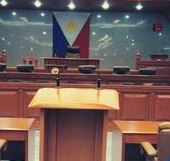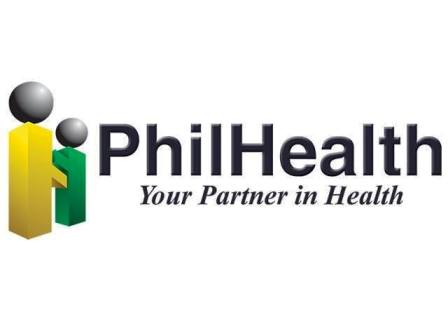Guidelines sa pagpapatupad ng granular lockdown with alert level sa NCR, inilabas na ng IATF

Ipatutupad na ng Inter-Agency Task Force on Emerging Infectious Diseases (IATF-EID) sa September 16 hanggang September 30 ang bagong patakaran sa National Capital Region na granular lockdown with alert level para makontrol ang paglaganap ng Pandemya ng COVID-19.
Sinabi ni Presidential Spokesman Secretary Harry Roque gagamitin sa Metro Manila ang Closed, Crowded at Close Contact strategy o 3 C’s principle.
Ayon kay Roque ang mga lugar sa NCR na isasailalim sa granular lockdown ay magkakaroon ng 5 alert level classification depende sa dami ng kaso ng COVID-19 at hospital bed utilization ng lugar.
Inihayag ni Roque ang Department of Health o DOH ang magdedetermina ng alert level ng lugar na isasailalim sa pilot testing ng granular lockdown at maglakaroon ng weekly health condition assessment.
Niliwanag ni Roque lahat ng mga residente ng lugar na nasa ilalim ng granular lockdown na positibo sa COVID-19 ay isasailalim sa 14 day isolation at kung mayroong malalang sintomas ay agad dadalhin sa hospital.
Iginiit ni Roque ang pagpapatupad ng bagong patakaran sa NCR ay naglalayong balansehin ang kalagayang pangkalusugan at kabuhayan ng mamamayan upang umandar na ang ekonomiya habang tumatawid sa pandemya ng COVID-19.
Statement Sec. Roque:
On the Guidelines on the Pilot Implementation of Alert Levels System for COVID-19 Response in the National Capital Region The Inter-Agency Task Force (IATF) issues the Guidelines on the Pilot Implementation of Alert Levels System for COVID-19 Response in the National Capital Region as a new classification framework to further curb the spread of COVID-19 and its variants.
In this new classification framework, we proactively advocate the Principles of 3C’s (Closed, Crowded and Close Contact) Strategy, which shall be applied in Metro Manila starting September 16, 2021. We should strive for total health and this can only be realized by carefully balancing our COVID-19 response by considering both the health of our people and the economic health of the nation, which this policy shift is all about.1. COVID-19 Alert Levels System -refers to the new Community Quarantine Classifications for dealing with COVID-19 covering entire cities and/or municipalities; aimed to manage and minimize the risk of the disease through System Indicators, Triggers and Thresholds determined by the IATF Sub-Technical Working Group on Data Analytics to specify the public health and social measures to be taken in relation to the COVID-19 response, as may be updated based on new scientific knowledge, information about the effectiveness of control measures in the country and overseas, and its application.
a. Alert Level 1 -refers to areas wherein case transmission is low and decreasing, total bed utilization rate, and intensive care unit utilization rate is low.
b. Alert Level 2 -refers to areas wherein case transmission is low and decreasing, healthcare utilization is low, or case counts are low but increasing, or case counts are low and decreasing but total bed utilization rate and intensive care unit utilization rate is increasing.
c. Alert Level 3 -refers to areas wherein case counts are high and/or increasing, with total bed utilization rate and intensive care unit utilization rate at increasing utilization.
d. Alert Level 4 -refers to areas wherein case counts are high and/or increasing, with total bed utilization rate and intensive care unit utilization rate at high utilization.
e. Alert Level 5 -refers to areas wherein case counts are alarming, with total bed utilization rate and intensive care unit utilization rate at critical utilization.
2. Granular Lockdown -refers to a micro-level quarantine for areas identified as “critical zones” by the local government unit (LGU) which may be declared regardless of Alert Level.
GENERAL GUIDELINES
1. The DOH shall identify the Alert Level of the pilot area. This area shall follow the protocols consistent with the declared Alert Level. For the duration of the pilot implementation, classification of the pilot area shall be done weekly, unless otherwise specified.
2. Close contacts, regardless of the vaccination status and possession of a negative COVID-19 test result, of probable and confirmed COVID-19 cases shall undergo fourteen (14)-day quarantine in accordance with the isolation and quarantine protocols set by the DOH.
3. LGUs in pilot areas shall submit on a daily basis to their respective Regional Inter-Agency Task Force (RIATF) such data as determined by National Government Agencies based on the template provided for by the IATF Sub-Technical Working Group on Data Analytics.
4. Minimum Public Health Standards (MPHS) shall be implemented at all times consistent with the DOH Administrative Order No. 2021-0043 or the Omnibus Guidelines on the Minimum Public Health Standards for the Safe Reopening of Institutions.
Vic Somintac






